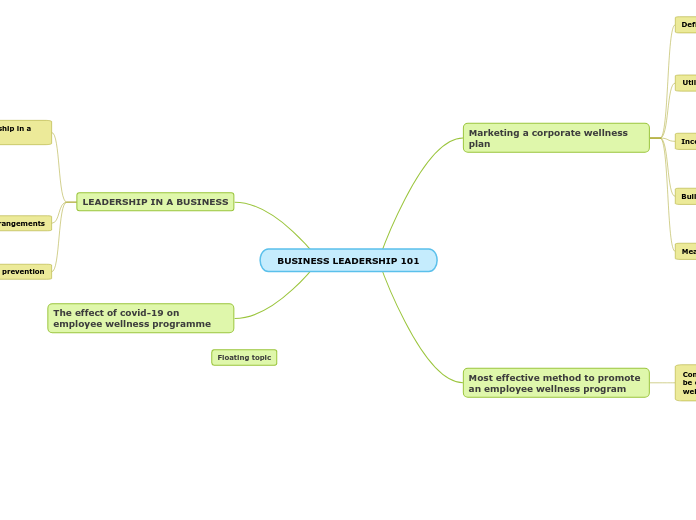BUSINESS LEADERSHIP 101
Marketing a corporate wellness plan
Define the Value Proposition
The first step in successfully marketing and promoting an employee wellness program is to clearly define the value proposition for employees. This involves highlighting the benefits of participating in the program, such as improved health, reduced stress levels, increased productivity, and reduced healthcare costs.
Utilize Multiple Communication Channels
Employers can utilize multiple communication channels to reach out to their employees and promote the wellness program. This includes email newsletters, posters and flyers, company intranet, social media platforms, and even messaging apps like Slack. Employers can also organize information sessions and webinars to promote the program and answer employee questions.
Incentivize Participation
Another way to promote employee wellness programs is by offering incentives for participation. This could include rewards such as gift cards, discounts, or even cash bonuses. Employers can also create friendly competitions to encourage employee participation, such as tracking steps or hours of exercise.
Build a Culture of Wellnes
Employers can build a culture of wellness within the organization by promoting healthy habits and creating a supportive environment. This can involve providing healthy food options in the workplace, encouraging employees to take breaks and walk around, and providing access to mental health resources.
Measure and Report on Success
Finally, it is important to measure and report on the success of the employee wellness program. This can involve tracking participation rates, measuring employee satisfaction, and monitoring health outcomes. By sharing success stories and highlighting positive results, employers can encourage more employees to participate and increase engagement over time.
Most effective method to promote an employee wellness program
Combination of the following methods can be effective in promoting an employee wellness program
In-person events: Organize in-person events such as health fairs, workshops, and seminars to promote the wellness program and provide opportunities for employees to learn about healthy habits and engage with program resources.
Email and newsletters: Use email and newsletters to regularly communicate with employees about the wellness program, share success stories, and highlight upcoming events.
Social media: Utilize social media platforms such as LinkedIn, Twitter, and Facebook to share information and updates about the wellness program.
Incentives: Offer incentives such as gift cards, discounts, or other rewards to encourage participation in the wellness program.
Leadership buy-in: Encourage leadership buy-in and support for the wellness program to show employees that the company values their health and well-being.
Wellness challenges: Create friendly competitions and wellness challenges to encourage participation and engagement in the program.
Company culture: Foster a company culture that prioritizes health and wellness by providing healthy food options and encouraging physical activity
LEADERSHIP IN A BUSINESS
What is the importance of leadership in a business?
Leaders form part of thr reason why businesses are successful. A perfect leader is someone who everyone wants to follow, the leader needs to know do as they say they will. A leader is important to a business because he/she boosts employee moral, allows people to develope and contributes to the sucess of the business.
@media print {
.ms-editor-squiggler {
display:none !important;
}
}
.ms-editor-squiggler {
all: initial;
display: block !important;
height: 0px !important;
width: 0px !important;
}
Hybrid work arrangements
Many companies have shifted to remote work during the pandemic, and this trend is likely to continue even after the pandemic is over. This may require a shift in how employee wellness programs are delivered, with a greater focus on virtual resources and support.
Emphasis on disease prevention
COVID-19 has demonstrated the importance of disease prevention and management, and employee wellness programs may need to place a greater emphasis on promoting healthy habits and behaviors that can help prevent the spread of disease.
